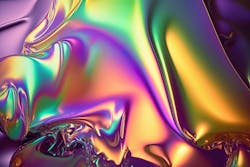Innovative Usage of AR/MR/VR – Part 3
What is the most innovative usage of filters in AR/MR/VR fields?
There have been many innovative uses of filters in AR/MR/VR fields. One of the most interesting applications is the use of holographic filters to create a more realistic and immersive virtual environment.
Holographic filters are essentially optical elements that can manipulate light in complex ways. By using holographic filters, it is possible to create highly realistic virtual objects that appear to be three-dimensional and can be viewed from different angles.
Holographic filters can be used in AR/MR/VR to address several optical challenges, such as increasing the field of view, reducing the size and weight of the device, and improving the overall image quality.
One common use of holographic filters in AR/MR is to expand the field of view beyond what is possible with traditional optical components. This is achieved by using a holographic waveguide, which is a thin layer of material that contains a holographic pattern that reflects and refracts light in specific ways. By carefully designing the holographic pattern, it is possible to direct the light in a way that creates a wider field of view without sacrificing image quality or increasing the size and weight of the device.
Another use of holographic filters in AR/MR/VR is to reduce the number of optical components required for the device, which can help to reduce the size and weight of the device while also simplifying the overall design. For example, a holographic combiner can be used to combine the real-world view with the virtual content, eliminating the need for a separate display and reducing the overall complexity of the device.
Last but not least, holographic filters can also be used to improve the image quality of AR/MR/VR devices. For example, a holographic diffuser can be used to scatter the light and reduce the appearance of visible pixels, which can improve the overall visual experience for the user.
Application of filters in AR/MR/VR
For example, Microsoft™ HoloLens™ 2 uses a holographic waveguide display system that incorporates multiple layers of holographic filters to create a highly realistic and immersive virtual experience. The filters are designed to selectively diffract and reflect light, allowing the virtual objects to appear as if they are located in the real world.
Another interesting application of filters in AR/MR/VR is the use of adaptive filters that can adjust their properties based on the user’s environment and preferences. For example, some AR/MR/VR devices use adaptive color filters that can adjust the color balance of the virtual environment based on the ambient lighting conditions.
Overall, the use of filters in AR/MR/VR fields is a rapidly evolving area, and there are many innovative applications and technologies being developed.
For Avantier, we are not only focusing on those typical applications of holographic filters, we will also focus on some uncommon applications of them. For example, holographic filters can be used to create a holographic metasurface, which is a planar array of subwavelength-sized optical antennas that can manipulate the amplitude, phase, and polarization of light. By carefully designing the holographic pattern, it is possible to create a metasurface that can focus light into a sub-diffraction-limited spot, or create complex patterns of light waves that can be used for holography or optical trapping. Please contact us if you’d like to schedule a free consultation or request for quote on your next project.
